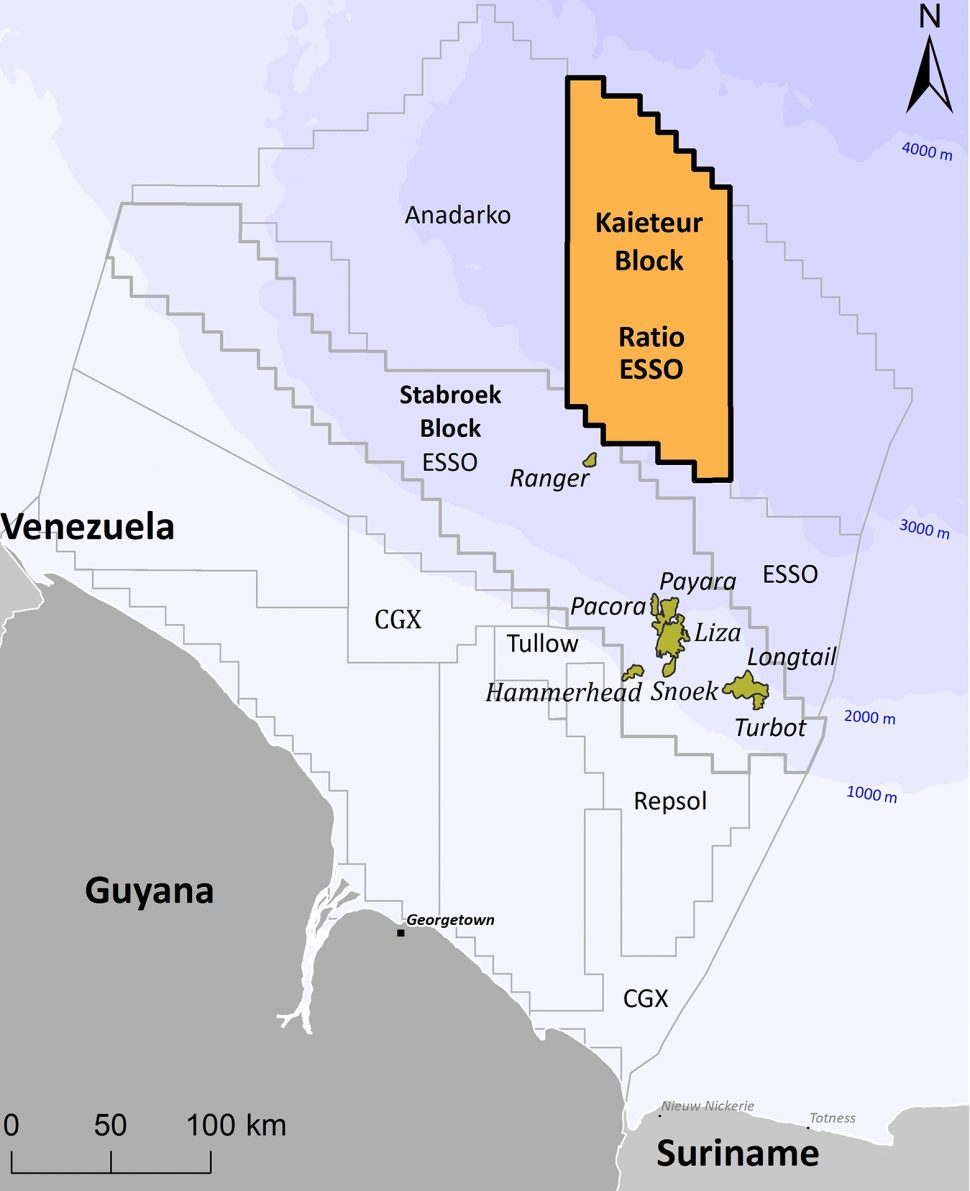Even as drilling exploration continues at its Yellowtail-1 site in the Stabroek Block, offshore Guyana, ExxonMobil is undertaking an environmental baseline survey of the nearby Kaieteur Block.
“This survey is completed to get a sense of current environmental conditions prior to planning for future drilling,” ExxonMobil Guyana’s Senior Director, Public and Government Affairs, Deedra Moe explained.
Ratio Petroleum, one of Exxon’s partners in the Kaieteur Block, says on its website that in 2017, a 3D seismic survey was conducted covering an area of 5,750 km² in the block. The entire block is some 13,535 km². “The processing work on the seismic data has been completed and the data is currently being interpreted. The interpretation phase is expected to be completed during the first half of 2019,” the company adds.
Ratio also notes that in February 2019, ExxonMobil announced that as part of the interpretation of the seismic survey data and in accordance with the terms of their agreement, it decided to proceed with an exploratory well in a prospect located in the southern part of the Kaieteur Block. The decision was made after a number of leads, in several stages of maturity, were identified in the block, it adds. Through an agreement with Ratio Petroleum and Cataleya Energy, ExxonMobil’s local subsidiary Esso Exploration and Production Guyana Limited (EEPGL) secured a 50% stake in the Kaieteur Block. Hess Corporation, which also has a stake in the Stabroek Block, subsequently acquired 15% participating interest from EEPGL.
On Ratio’s website, it states that ExxonMobil holds 35% of the petroleum rights in the Kaieteur Block and is the operator of the block, while Ratio Guyana holds 25%, Cataleya 25% and Hess the remaining 15%.
The Kaieteur block is approximately 250 kilometers offshore Guyana in ultra-deepwater north and adjacent to the Stabroek and Canje blocks.
This newspaper understands that the operations will be just east of the Anadarko Roraima Block and seaward of ExxonMobil’s Stabroek Block, just slightly west of where the Liza discovery was made.





